I am currently restructuring my website, thank you for being patient

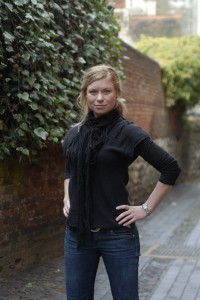
I am currently restructuring my website, thank you for being patient
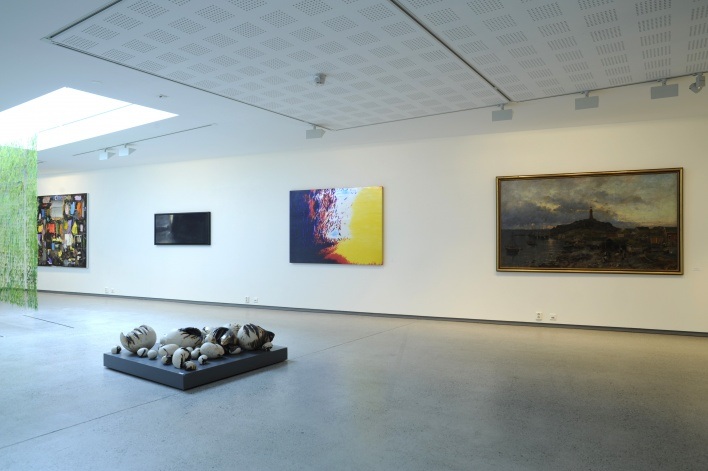
Marit Øydegard er invitert til Ã¥ delta på utstillingen med sin installasjonen “Pathâ€. Installasjonen bestÃ¥r av hÃ¥ndmodellerte skulpturer i steingodsleire som sammen danner en sti, en søken tilbake til naturen.
Hovedinspirasjonskilden til Marits arbeider er naturen. NÃ¥r hun starter et nytt prosjekt, legger hun først ut pÃ¥ en reise med kameraet for Ã¥ fange former som hun tiltrekkes av og som hun synes er spennende. PÃ¥ dette stadiet tenker hun ikke pÃ¥ hva bildene konkret kan inspirere til, men ser etter motiver som hun i øyeblikket opplever som vakre. Motiver som fÃ¥r øynene hennes til Ã¥ renne og halsen til Ã¥ føles tykk. Hun forsøker Ã¥ memorere opplevelsen – â€NÃ¥r jeg har den samme følelsen ovenfor en skulptur eller installasjon, vet jeg at jeg er pÃ¥ sporet av noeâ€.
Den 16.06. 2012 åpner utstillingen “NATUR PÅ NORDVESTLANDET† på Kunstmuseet KUBE som skal stå i  to år.
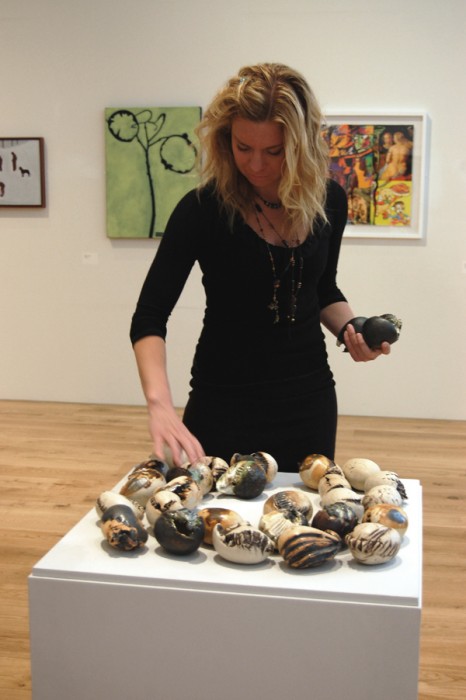
STIPENDUTSTILLING –  KOLLEKTIVUTSTILLING MED MOTTAKERE AV MØRE OG ROMSDALS KUNSTNERSTIPEND
Marit Øydegard skal delta pÃ¥ Kunstmuseet Kube sin stipendutstilling med verket “Pathâ€. Skulpturene i installasjonen, som oppstÃ¥r gjennom improvisasjon pÃ¥ samme mÃ¥te som musikk blir til i en â€jam-sessionâ€, representerer essensen av naturen. Inspirasjon til verket er hentet fra linjer og bevegelser som er karakteristiske for alle naturlige former som blir til gjennom pÃ¥virkningav naturens elementer, eller utvikling gjennom millioner av Ã¥r.
Utstillingen er åpen fra 17.03. til 27.05.2012
Mer informasjon om utstilling, tid og sted finnes på Kube sine nettsider:
http://www.kunstmuseetkube.no/
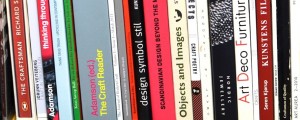
The Norwegian crafts field is focusing increasingly on academic theory and discourse. As an instantiation of this development, Marit Øydegard chairs a round table discussion with Jorunn Veiteberg, Knut Astrup Bull and Jørn Mortensen, on the question of how contemporary crafts are viewed as a distinct field of practice or in relation to fine art.
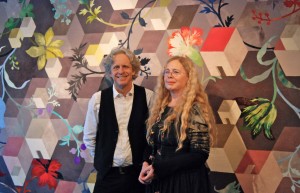
It has been 25 years since Inger Johanne Rasmussen last exhibited at the National Museum of Decorative Arts (Nordenfjeldske Kunstindustrimuseum) in Trondheim, Norway. Now she has returned with grandeur. Monumental textiles cover the walls of the large gallery space in a solo exhibition called “Retellings and Mythsâ€. For this project, Rasmussen has collaborated with Terje Nordby – a playwright, radio celebrity and “mythologist in private practiceâ€. The textiles themselves tell stories, but through Nordby’s reflections, they take on an added dimension.
Text: Marit Øydegard
It has been 25 years since Inger Johanne Rasmussen last exhibited at the National Museum of Decorative Arts (Nordenfjeldske Kunstindustrimuseum) in Trondheim, Norway. Now she has returned with a solo exhibition called ‘Retellings and Myths’. This time Rasmussen has collaborated with Terje Nordby – a playwright, radio celebrity and “mythologist in private practiceâ€. The textiles themselves tell stories, but through Nordby’s reflections, they take on an added dimension.
Inger Johanne Rasmussen (b. 1958) studied textile arts at the Norwegian National College of Applied Art and Design in Bergen, graduating with a ‘hovedfag’ (roughly equivalent to a Master’s Degree) in 1994. Prior to this, she studied at other schools including the University College of Arts, Crafts and Design in Stockholm (1983-84). Even though Rasmussen has consistently worked with textiles, her artistic expression relates also to painting and other craft traditions.
 Inger Johanne Rasmussen: Used coat (Brukt frakk), 134×64 cm, 2010 Photo: Torgny Skogsrud
Inger Johanne Rasmussen: Used coat (Brukt frakk), 134×64 cm, 2010 Photo: Torgny Skogsrud
Over the past years Rasmussen has held many solo exhibitions in museums and galleries and participated in group shows around the world. She has created numerous commissioned works for hospitals, schools, churches and Norwegian embassies in Brussels, San Francisco, Tokyo, Beijing, Buenos Aires and Singapore.
Her last solo exhibition, entitled Retellings and Myths, opened on 22 January 2011 and consists of a large number of monumental textile pictures. Her motifs can easily be associated with textiles found in the home, for instance bedspreads and tablecloths, yet the patterns are intensified and considerably enlarged. In terms of visual expression, her works are rich in colour and the motifs range from geometric patterns and squares to organic, sinuous flowers. But despite this variation, the technique and materials are the same. Regarding Rasmussen’s choice of motifs, she says; ‘’Many people think working with flower motifs is something a serious artist doesn’t do, but from my perspective, if you want to provoke, go for flowers rather than blood’‘. Rasmussen uses felted wool and foot clothes, many of military origin, which she dyes and uses to create what she herself refer to as ’’inlaid textiles’’. She sews them by hand. It is therefore not the visual expression but the format and technique that create coherent unity in the exhibition.
Collaborative process
Viewing these monumental textiles is like getting a glimpse of a myth you partially understand, in a language you barely know. Despite the dreamlike images, they are easy to relate to, as they call to mind stories and fairytales or memories of visiting grandma as a child. The large textiles appear quite overwhelming in their colours and patterns, but their familiarity makes them approachable. Inspecting them up close, new aspects emerge which contribute to the story.
 Inger Johanne Rasmussen: The land between dream and realiy (Landet mellom drøm og virkelihet), 208×303 cm, 2010 Photo: Torgny Skogsrud
Inger Johanne Rasmussen: The land between dream and realiy (Landet mellom drøm og virkelihet), 208×303 cm, 2010 Photo: Torgny Skogsrud
Yet another component adds to the experience of the exhibition: the recordings by writer and radio-celebrity Terje Nordby. He has written texts for six of the textile pictures and recorded readings of each of the 6-9 minute-long passages. In the gallery you can listen to the texts through headphones, download them on smart phones or listen to the texts whilst looking at the textiles on YouTube. The texts generally concern well-known myths, and Nordby, through discussions with Rasmussen, manages to forge connections to the pictures. Nevertheless, these texts by no means reduce Rasmussen’s works into mere illustrations. Rather, they complement the textile pictures in ways that challenge us to piece together the different parts. Rasmussen gives us a clue: ‘’the connection isn’t in the way the textile pictures are conveyed through colour, style, figure and form, but it can be found in their content’‘.
 Inger Johanne Rasmussen in her studio. Her colouring technique allows a sort of flare, which adds light, life and depth to her pictures. Photo: Torgny Skogsrud
Inger Johanne Rasmussen in her studio. Her colouring technique allows a sort of flare, which adds light, life and depth to her pictures. Photo: Torgny Skogsrud
By calling her textiles ’’retellings’’, Rasmussen let us know she is conscious about her methods. She reassembles elements from various stories and memories, and in this way perpetuates the meaning of the elements but also expands it by adding a new perspective. As Rasmussen herself says, it is essential for an artist to find her own story if she wants to realize what is important. As such, ’’retellings’’ may be interpreted as a process of reflecting on the materials she uses, but also on the themes, figures, patterns and shapes.
Rasmussen’s decision to use foot clothes from an army depot was first and foremost due to their visual and technical qualities. She has now started adding materials from other sources. Woven and felted wool is highly suitable for creating the magnificently luminous shades that are so characteristic for her work. In comparison to a painting, where the colour is on the canvas surface, Rasmussen’s colours penetrate the fabric and result in a saturated luminosity. Her colouring technique also allows a sort of flare, which adds light, life and depth to her pictures.
 Inger Johanne Rasmussen: Practice piece (Øvestykke), 226×282 cm, 2010. Photo: Torgny Skogsrud
Inger Johanne Rasmussen: Practice piece (Øvestykke), 226×282 cm, 2010. Photo: Torgny Skogsrud
Inger Johanne Rasmussen refers to her works as textile pictures, but “Retellings and Myths†is just as much about words. Her reason for using words is, she says, because words are tools with which to think. By reading and writing, our thoughts become clearer, and this is a necessary aspect of a creative process. Prior to taking on the project of Retelling and Myths, she had a notion that ‘’my thoughts are far from being as sharp as my scissors, and if I don’t start to use my brain, I will go dim’’. Consequently she began researching the origin of her work.
Rasmussen’s textiles are overwhelmingly beautiful, but they contain much more than the immediate impression of beauty and technique. They are stories. Beauty is an important part of course, but it was only when she heard Nordby’s radio show Myth Calendar, that she realized what her work was really about. Rasmussen felt that everything fell into place; it made perfect sense to relate the textiles to older texts and myths. She consequently wrote a letter to Nordby, asking if he was interested in collaborating with her, and they started talking.
 Inger Johanne Rasmussen: Dark tree (Mørkt tre), 213×297 cm, 2010 Photo: Torgny Skogsrud
Inger Johanne Rasmussen: Dark tree (Mørkt tre), 213×297 cm, 2010 Photo: Torgny Skogsrud
Rasmussen remembered an old saying from when she was an art student: ‘’art is between chaos and technique, beauty and ugliness’‘. We all operate between these two boundaries, she says, ’’but the real meaning of the sayings was revealed to me when I heard Nordby discussing Apollo and Dionysus’’. The balance or conflict between the two characters from Greek mythology is highly relevant for the arts.
Dionysus was the god of the grape harvest and wine ritual; he represents both madness and ecstasy. He is strongly associated with satyrs and centaurs and represents femininity, chaos and nature. Apollo, on the other hand, is associated with autonomy and order, prosperity, strength, masculinity and progress. Nordby draws on Nietzsche in stating that it is the tension between the feminine and the masculine that brings progress. If we have too much of Dionysus or Apollo in us, things will go badly wrong.
 Inger Johanne Rasmussen: The road (Vegen), 213×297 cm, 2010 Photo: Torgny Skogsrud
Inger Johanne Rasmussen: The road (Vegen), 213×297 cm, 2010 Photo: Torgny Skogsrud
It is evident that Rasmussen and Nordby have been having deep discussions about the meaning of art and their own particular part in the contemporary art scene. Nordby questions whether it is possible to interpret contemporary art in relation to ideas about Dionysus and Apollo, especially in an age where we live in awe of timetables more than we worship gods. To bring progress to our daily life or the world in general, Nordby suggests, it is not enough to be strictly organised: we also need chaos. We need art, myths and fairytales in order to live a full life. This idea of balance between order and chaos is even evident in Rasmussen’s method of working: ‘’I make chaos, tidy up, then make chaos again, and tidy up. I continue this balancing act as I try to get a balance between the two’’.
Throughout Modernism, abstract and non-figurative art were dominant, and then Post-modernistic art came along and started commenting on itself. People began to ask what art was, as if it was an element. ‘’But art must be what it is; it’s essential that it allow contemplation. We need stories’’, Nordby stresses.
Inger Johanne Rasmussen and Terje Nordby agree: it is high time for artists to resume commenting on subjects outside the field of art. What is art for? – this is a question participants in the artworld must continue to ask.